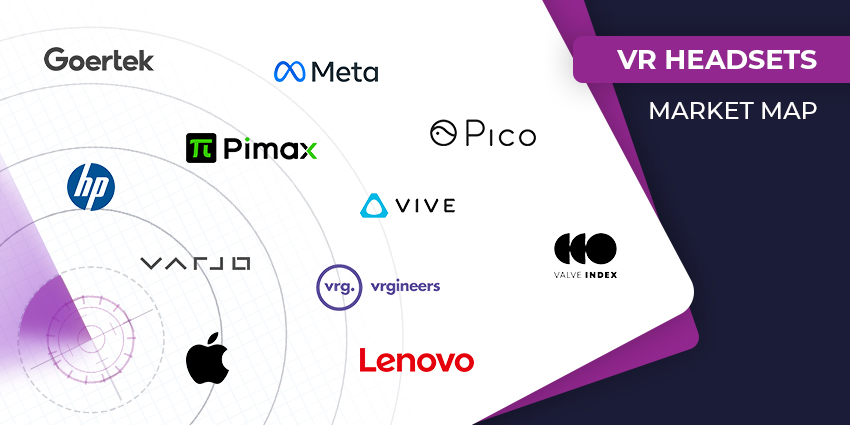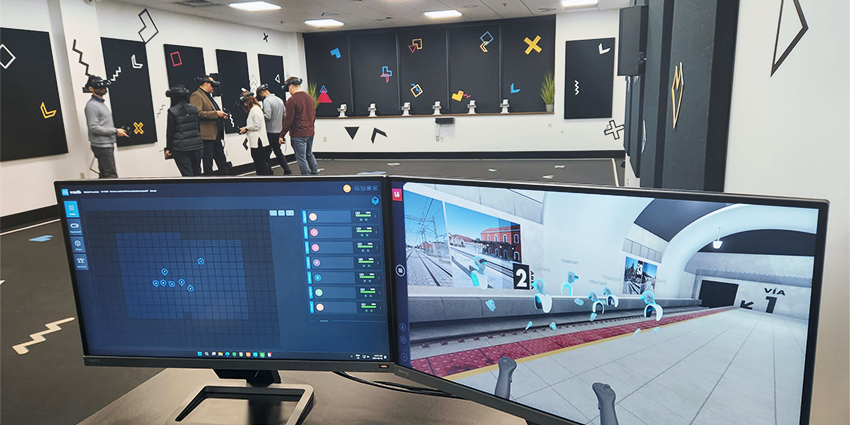To date, the global tech industry continues to discuss work in the Metaverse. Despite the excitement on the subject, confusion on how it will influence the world remains a problem.
Major tech firms have strategically begun developing the Metaverse and have even rebranded to reflect the changes. Meta Platform, NexTech AR, NVIDIA, and many others have joined the growing trend of metaverse firms developing the next stage of the internet.
With this, tech firms can provide innovative tools to entertain, communicate, work, collaborate, and learn. In the next iteration of spatial communications, this will forever change the workplace.
What (and Who) is the Metaverse?
Going beyond science fiction, the Metaverse combines the Internet and spatial communcations technologies. These aim to build interoperable sets of digital worlds, assets, and interactions.
Neal Stephenson originally coined the phrase in his 1992 novel Snow Crash. In it, the Metaverse was a shared virtual space connected with fibre optics and people using VR headsets.
Today, Stephenson’s vision is slowly becoming a reality as tech companies build working solutions to create the Metaverse. Meta Platforms’ Chief Executive and Founder, Mark Zuckerberg, recently pivoted to building technologies to realise a real-world version of Snow Crash.
Despite Zuckerberg’s reported failure and investment reduction for Reality Labs, Meta Platforms is only one of many tech firms developing spatial solutions. Numerous firms are now developing the enterprise metaverse, which has offered incredible use cases with tangible results.
Global tech giants such as NVIDIA, Lenovo, Unity, Epic Games, HTC VIVE, and others have already entered the metaverse space race. Their innovations and products, along with combined efforts, will inevitably create the very metaverse people have dreamed of.
What is the ETA?
Although it is difficult to pinpoint its exact estimated time of arrival (ETA), companies are already building specific use cases.
Major tech firms like Meta Platforms, NVIDIA, Varjo, and Pico are developing novel metaverse platforms such as Horizon Worlds, Omniverse, Reality Cloud, and Pico Worlds, respectively.
These consumer-level platforms fresh tools allow people to work, collaborate, socialise, and interact in virtual communities. Conversely, enterprise solutions are designed at scale to accommodate an immense number of use cases and bespoke data sets.
Enterprise metaverse platforms will also leverage digital twins, artificial intelligence (AI), blockchain, edge and cloud computing solutions interchangeably, interoperability, and persistently. Doing so will offer remote monitoring of entire smart facilities to manage, record, and resolve activities.
Working in the Metaverse
Previous visions of the Metaverse have now transformed into profitable, agile metaverse systems for the enterprise. New mixed reality (MR) headsets such as the Meta Quest Pro, Magic Leap 2, Lenovo VRX, and Pico 4 Enterprise have dramatically stepped up the XR industry. Now, creatives can leverage them to collaborate in the physical and virtual world, seamlessly and interoperably.
The greater the technology, the more opportunities people will have to explore the Metaverse. Qualcomm has also begun rolling out its Snapdragon AR2 platform for smart glass manufacturers, allowing the industry to skyrocket in its number of solutions. This democratisation of technology will empower smart glass manufacturers, developers, and enthusiasts with greater choice and freedom.
Lighter, more powerful devices will change how people connect to and even develop the Metaverse. This will come parallel to industry efforts to develop the best practices and standards for building it.
These will allow for greater computing capabilities as well as longer wearing times, leading to an agile, spatially-backed workforce.
Also, companies with environmental, social, and governmental (ESG) targets can streamline their workflows with paperless, flexible, and interoperable systems. This will also lead to companies using fewer resources for travel, documentation, repairing, and event planning.
The Industrial Metaverse
Digitally-twinned facilities will also empower companies with real-time monitoring of critical infrastructure. Companies no longer need to fly engineers on-site hundreds of miles away. With XR, firms can deploy remote guidance systems to instruct local engineers on repairs in real-time.
Upskilling is also a massive benefit for metaverse technologies. This comes as companies and organisations train current and future staff for their roles. Companies like ARuVR are preparing them on day one, rather than via lengthy training sessions and evaluations. VR headsets can analyse performance metrics in real-time and precision accuracy to communicate progress to employers and their workforces.
No matter the profession, pilots are training on Varjo Aero headsets virtually, for real-life credit hours towards their pilot licences. WS Darley and Vuzix are preparing the first responders of tomorrow with force-feedback and RT3D-backed analytics. Arthur, Oberon Technologies, rooom, and Spatial are training and rallying workforces in shared virtual spaces with immersive digital assets. Additionally, NVIDIA and Autodesk are teaming up to deliver real-time, enterprise-level collaborative spaces for the architectural, engineering, and construction (AEC) industry.
The possibilities are endless with XR, and the future of Metawork is a tangible, measurable reality.
Downsides to Metawork
Despite the benefits of metawork, the infrastructure for facilitating such solutions will take time to develop. Emerging technologies such as 5G, cloud and edge computing, and smart AI network management will empower future networks at scale. Telecoms such as AT&T, T-Mobile, Verizon, China Mobile, and many others are working to expand such infrastructure.
With the increase of data traffic, data security will also take precedence. Cybersecurity issues on sensitive data from institutions and corporations will test how resilient networks function for the Metaverse.
Headsets will also improve over time to avoid disorientation and latency issues creating uncomfortable immersive experiences for users. As people use XR devices for longer, headset ergonomics will continue to improve vastly, both via hardware and software solutions.
Jobs for Metaverse Work
With the maturity and success of the developing metaverse, more creative and virtual jobs will surface on the platform. People will no longer require a studio, but a headset, to design items from augmented reality (AR) clothing to cutting-edge vehicles.
Employers can also create bespoke, repeat, and smart immersive training modules to upskill workers for simple jobs such as retail to even the most complex surgical procedures in medicine. Its massive potential to boost learner retention and engagement rates will also help it pervade industry verticals and sectors.
The Future of Metawork
The future of the Metaverse and immersive work will challenge the foundations of global workforces. This is especially true following the COVID-19 pandemic its subsequent Great Resignation era.
Despite the ongoing challenges from the market, research from the XR Association shows that XR may facilitate the global economic recovery by managing critical upskilling procedures and expanding the industry with new technologies. This will create rapid turnarounds for workforces to stabilise industries.
From small businesses to full-scale multinationals, immersive technologies will enhance regular operations for enterprises more than ever. As XR develops, grows, and expands, global industries will become increasingly ‘plugged in’ to the future of work in the Metaverse.







